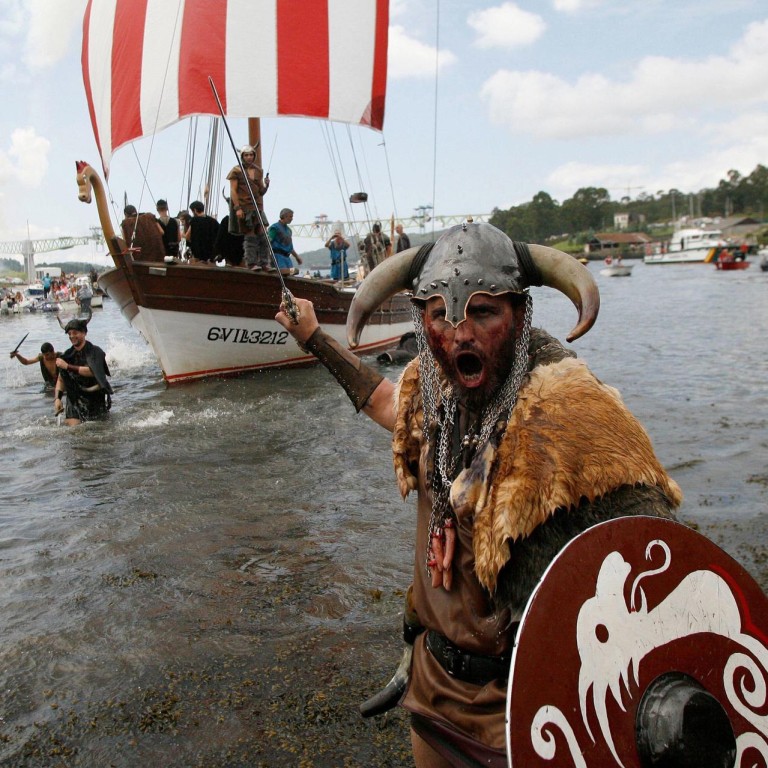
New exhibition claims there was more to Vikings than death and destruction
Norse raiders often regarded as fearsome savages were also shrewd traders with interest in personal grooming and jewellery design
They are generally thought of as fearsome, unkempt, bloodthirsty raiders who caused mayhem wherever they went. But in fact, the Vikings were also skilled traders who loved jewellery, personal grooming - and even had a soft spot for cuddly bears, a major exhibition argues.
Opened at the National Maritime Museum Cornwall on Saturday, 'Viking Voyagers' has brought together artefacts from Denmark, Ireland, the Isle of Man and the British Museum to humanise a people often associated with death and destruction.
Gareth Williams, co-curator of the exhibition and a leading expert in Viking culture, conceded the warriors were guilty of some pretty reprehensible behaviour - after all, 'Vikingr' is old Norse for pirate or raider.
"The criticism is justified, but their society was so much more than murder and violence," he said. "Those are just the headlines. It's a bit like the English football hooligans in the 1980s.
"They attracted the headlines and some people began to think all English people were like that. Which obviously is untrue."
The centrepiece of the exhibition in Falmouth is not a dragon-headed Viking battleship but an altogether gentler looking replica of a trading ship - named Walrus - that would have plied coastal waters in the 11th century.
It could carry up to five tonnes of cargo and sailed with a small crew of between five and eight men, sustained by buttery porridge bulked out with dried meat or fish. Broad and shallow, almost barge-like, it could easily be dragged up on to beaches.
One of the display cases shows a collection of items found on the shoreline of the Isle of Man, indicating that a Viking beach market was held there.
Travelling craftspeople would have traded in bronze objects such as cloak and scarf pins. Also found there were coins from the Islamic caliphate that ruled most of north Africa and the Middle East, a reminder of how widely the Vikings travelled.
The exhibition points out that Viking women would also have traded at a beach market like this - a reminder that their society was in many ways more equal than the Christian-dominated societies that followed.
Evidence of women's presence was also found in a 76-acre Viking camp found in north Yorkshire dating back to the 9th century and represented in another display case. Williams is particularly excited about this exhibit as he believes it provides a missing link between temporary warrior war camps and the much larger, more permanent settlements that led to the creation of towns and cities, such as York.
And as for grooming? A rather large and severe looking bone comb with iron rivets found in York and dating to the ninth or 10th centuries shows that the Vikings did try to look after their hair.
"Despite the popular image of Vikings as wild and shaggy looking, bone and antler combs are very common finds," said Williams. "We even know the name of one combmaker. A comb from Lincoln carries the inscription: 'Thorfastr makes a good comb'."
Toiletry sets for women and ear scoops to dig wax out have also been discovered.
But one of Williams's favourite items on display (along with his own Viking toy from when he was three) is a bright brooch adorned, not with dragons or serpents, but bears' heads. Cuddly teddy bears are generally thought of as a 20th-century invention.
"But those look like teddy bears to me," said Williams. "They are cute and cuddly."
